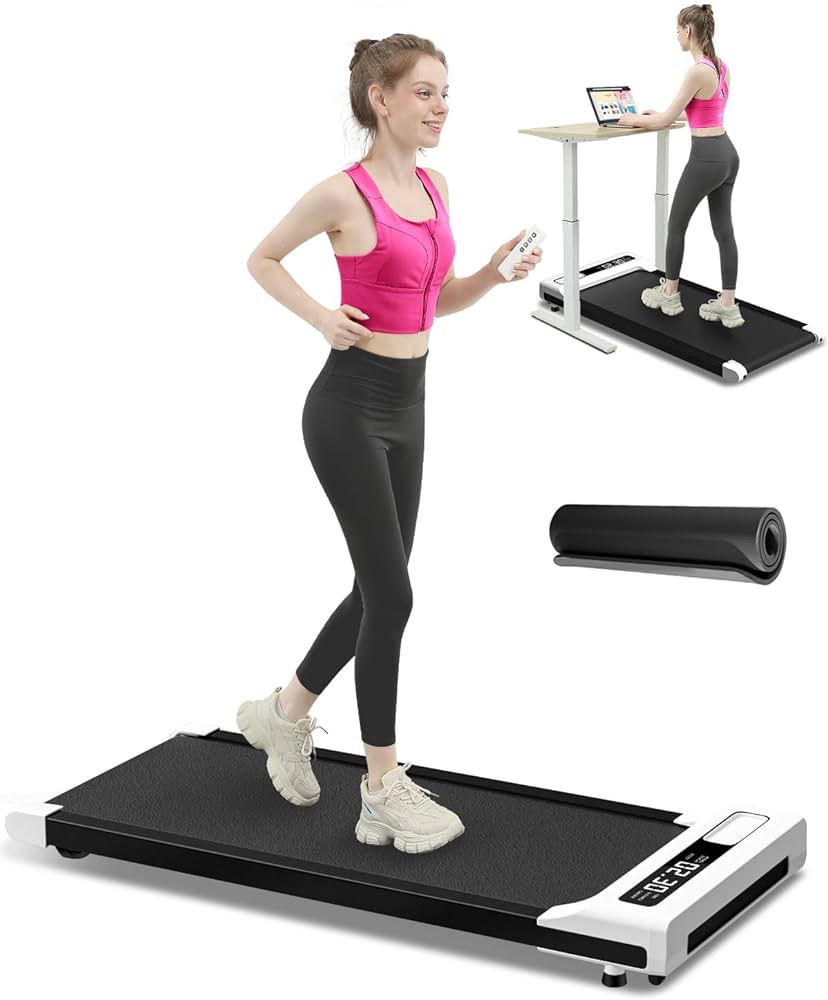In the world of fitness trackers and smart devices, counting steps has become a popular way to measure physical activity. But have you ever wondered if those trendy walking pads, which seem to be popping up everywhere, actually count steps? Well, this article is here to shed some light on the matter. So, grab a cup of tea and get ready to explore the intriguing world of walking pads and step counting.
Do Walking Pads Count Steps?
Walking pads have become increasingly popular among fitness enthusiasts as a convenient way to track their daily step count. But you may be wondering, do walking pads actually count steps accurately? In this comprehensive article, we will delve into the world of walking pads, exploring how they work, their accuracy, and any limitations they may have. We will also discuss alternative tracking methods and provide tips for accurate step counting. So, let’s dive right in and find out if walking pads can indeed count steps effectively!
Understanding Walking Pads
What are Walking Pads?
Walking pads, also known as smart treadmills or smart walking machines, are specially designed equipment that allows users to walk or run in place. Unlike traditional treadmills, walking pads are compact, portable, and do not have handles or supporting structures. They are typically made of a soft, cushioned material, making them more comfortable to use for extended periods.
How do Walking Pads Work?
Walking pads utilize advanced sensor technology to track the movement of your feet. These sensors detect each step you take, allowing the walking pad to calculate your step count accurately. Some walking pads also come equipped with additional features like distance tracking, speed monitoring, and even heartbeat sensors.
Accuracy of Walking Pads
When it comes to step counting, accuracy is of utmost importance. Luckily, modern walking pads have undergone significant advancements, resulting in improved accuracy levels. However, it is important to note that the level of accuracy can vary depending on various factors, such as the quality of the walking pad and your walking technique. Let’s explore this in more detail.

Counting Steps with Walking Pads
How Walking Pads Count Steps
Walking pads count steps by analyzing the pressure and movement patterns generated as you walk or run on the pad’s surface. The sensors embedded within the walking pad detect these patterns and convert them into step counts. Typically, each time your foot strikes the surface of the walking pad, a step is registered.
Factors Affecting Step Count Accuracy
While walking pads can provide reasonably accurate step counts, certain factors can affect their accuracy. For instance, if you tend to shuffle your feet or take shorter strides, the walking pad may not register each step accurately. Additionally, the quality and calibration of the walking pad’s sensors can impact the accuracy of the step count. Therefore, it is important to consider these factors when relying on a walking pad for accurate step tracking.
Comparing Step Counts with Different Walking Pads
If you are using multiple walking pads or comparing your step count with others, it is important to consider that each walking pad may have slight variations in accuracy. Factors such as sensor technology, calibration, and overall build quality can contribute to these discrepancies. It is advisable to use the same walking pad consistently and not solely rely on step counts as a measure of health and fitness progress.
Benefits and Limitations of Walking Pads
Benefits of Using Walking Pads
Walking pads offer several benefits that make them an appealing choice for individuals looking to track their daily step count. Firstly, their compact and portable design allows you to easily incorporate walking into your daily routine, regardless of space constraints. Secondly, Walking pads provide a low-impact cardiovascular workout, making them suitable for individuals with joint issues or those who prefer a gentler exercise option. Lastly, the ability to accurately track your steps and other metrics can help you monitor and adjust your fitness goals effectively.
Limitations of Walking Pads
While walking pads have their advantages, it is important to be aware of their limitations as well. As mentioned earlier, factors like walking technique and sensor quality can impact accuracy. Moreover, walking on a pad may not replicate the same experience as walking outdoors, as it lacks variation in terrain and the natural movements involved in outdoor walking. Therefore, it is essential to use walking pads as a tool for tracking progress rather than relying solely on them for your overall fitness assessment.

Alternative Tracking Methods
Smartphone Apps
Smartphone apps have become increasingly popular for tracking steps and other fitness data. These apps utilize the built-in accelerometers in your phone to detect movement and register steps. While they can be convenient, their accuracy can vary depending on factors such as phone placement and calibration.
Fitness Trackers
Fitness trackers, like smartwatches or dedicated activity trackers, are designed specifically for step counting and fitness tracking. These devices typically use accelerometers or gyroscope sensors to monitor your movements. Fitness trackers often provide more detailed data, such as heart rate monitoring, sleep tracking, and even GPS tracking for outdoor activities.
Manual Tracking
For those who prefer a low-tech approach, manual tracking is always an option. Simply keep track of your steps using a pedometer or by manually counting each step. While this method may not be as convenient or accurate as automated tracking options, it can still provide a rough estimate of your daily step count.
Tips for Accurate Step Counting
Calibrating Your Walking Pad
To ensure the highest level of accuracy, it is recommended to calibrate your walking pad regularly. This involves following the manufacturer’s instructions to set up the walking pad correctly and adjust any necessary settings. Calibration helps the walking pad accurately detect your steps and minimize any discrepancies.
Maintaining Proper Walking Technique
Maintaining proper walking technique is essential for accurate step counting. Avoid shuffling your feet or taking excessively short strides, as this can lead to missed steps. Instead, aim for a natural walking motion with a heel-to-toe stride. This will help the walking pad register each step more effectively.
Comparing Data with Other Activities
While focusing on step count can be beneficial, it is also important to consider other activities that contribute to your overall fitness. engage in a variety of exercises, such as strength training, yoga, or cycling, and compare the data from different activities to gain a more holistic view of your progress.

Conclusion
So, do walking pads count steps? The answer is yes, Walking pads can count steps accurately, provided they are of good quality, properly calibrated, and used with proper walking technique. However, it is important to understand that step count alone does not paint a complete picture of your fitness journey. Consider using walking pads as a tool alongside other tracking methods and activities to develop a more comprehensive understanding of your overall health and progress. Keep walking, stay active, and enjoy the benefits of incorporating walking pads into your fitness routine!






